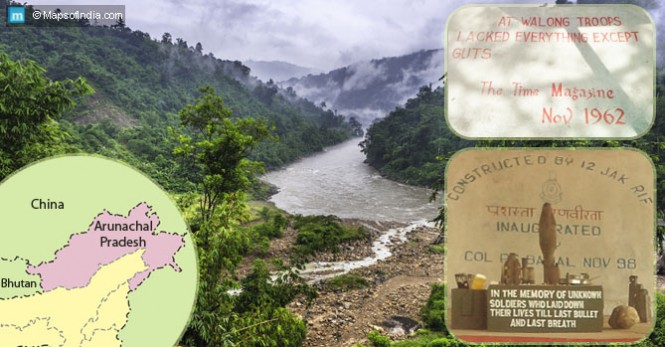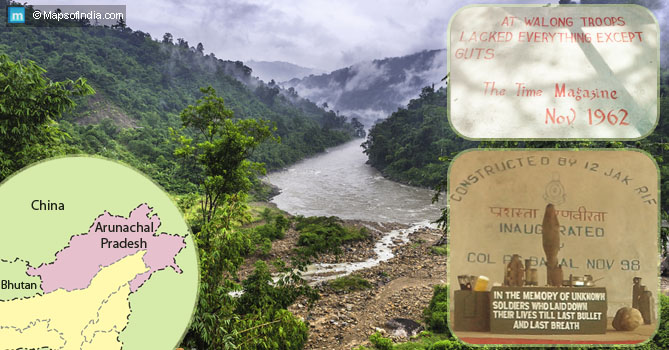 Why is it that some of the most beautiful places in the world are also prone to violence? While this question is often asked in India with reference to Kashmir, Arunachal Pradesh, the land that meets the Sun’s first rays, remains conveniently eclipsed.
Why is it that some of the most beautiful places in the world are also prone to violence? While this question is often asked in India with reference to Kashmir, Arunachal Pradesh, the land that meets the Sun’s first rays, remains conveniently eclipsed.
The Forgotten State
A chat with both the civilians and military personnel living in the mountainous parts of Arunachal Pradesh throws up startling revelations. Arunachal is what the faujis call ‘hard posting’ – a tenure in the harshest, most unforgiving of terrains, without family for company, and often without even the basics of living such as electricity, medical facilities, and telephone connectivity. The severe monsoons and winters leave the inhabitants waging a constant battle against the cold or against natural calamities. Those who have witnessed the tremendous progress made by the rest of the nation through the decades of independence can only wonder why this state remains forgotten. “The North East has made little progress, and whatever you see has come up in the past five years”, said a local. According to the last census in 2011, the state has a population of about 13.84 lakh but a population density of only 17 per sq km vis-à-vis a national population density of about 382 per sq km. While it may be claimed that this is due to the mountainous terrain and the difficult conditions, one cannot stop to wonder if things are such due to sheer neglect. Other mountainous and forested parts of our country (such as the Nilgiris) have developed their tourism potential, and have become hubs for posh boarding schools.
Memories of Midnight
China. That is the looming word that resonates across the state. Arunachal has, quite honestly been unable to emerge from the shadows of the 1962 war. One arduous, backbreaking drive up from Walong to Helmet Top (about 18 kilometers) will take you to a war memorial – a small shed – that stands as the only reminder of the mindless battle that was fought here and the sacrifices of brave men. The people of Arunachal Pradesh are unforgiving of the many opportunities that have been passed up by the political leadership of India to resolve the border dispute with China and bring peace to this state. While China has never acknowledged the McMahon Line as the LoC, negotiations between the two countries to settle on an International Border have been unsuccessful even after five decades of the war where India suffered a humiliating defeat.
“I Will Die Here”
A Google search will reveal that the distance from Hayuliang to Walong is a mere 98 kilometers; ideal conditions would have called for a 2 ½ hour drive through some of the most scenic spots in India. The truth of the terrain, however, is far harsher than any narrative you may hear. The drive takes five hours at best. The mountain roads are often made of mud and slush with tiny springs and waterfalls making it a difficult route to traverse. At each bend the local driver you may have hired is likely to remind you of the last vehicles to have taken a plunge into the gorge. River Lohit shall be your only company. Somewhere in-between is a 10 kilometer stretch of rocky landscape punctuated by one single tea shop. The smiling lady who makes tea and Maggi for tourists here is often heard saying “I was born here, I shall die here; for everything else we need to go down to the plains”. Beauty and adventure apart, it gets us wondering about the neglect and the sorry state of infrastructure in this part of the country.
The Final Frontier
Kibithu, the final frontier where the tricolor flies high, is less than about 30 kilometers from Walong. While initial part of the journey to Kibithu is distinctly reminiscent of the rolling highlands of Scotland – the beauty of Namti plains remains unparalleled – the final few kilometers of narrow mud road are enough to scare the daylights out of the bravest, except the soldiers of the Indian Army, of course. While these soldiers may show exceptional courtesy to a guest at their post, the highest security protocols are also maintained here. But at what cost? It takes over three days for an Army convoy to navigate the distance from Kibithu to Dibrugarh, the nearest airport (just about 400 kilometers away). This means there is no way a serving soldier can get back home quickly to attend to a family exigency. That is assuming they receive message at all, given the lack of telecom networks (apart from snatches of BSNL connectivity).
The Politics of Development
Even without a telescope, one look across the border into China is enough to discern that development across the border is way ahead of what can be found in our end. Concrete structures, metaled roads, and the semblance of civilization – in the same terrain! This has much to do with the “politics” of our society. The border areas, being extremely sensitive, are largely closed to tourists. The locals live a shabby life and earn their living by livestock farming, cultivation, or as porters to the defence personnel. Land acquisition by any government agency or by the military for development purposes face strong opposition from local lobbyists. The Indian Army, for example, has been trying to construct a bridge across the Lohit which shall make passage to Tezu an easy one. The efforts, however, have run up a roadblock with local ferry service providers putting up a fight. The tussle could go on for a decade, the locals dejectedly say.
Arunachal Pradesh has Cities
With a population of about 34,970 people, Itanagar is the capital city of Arunachal Pradesh. The nearest airport is at Jorhat in Assam, about 70 kilometres away. The other airport that connects the state is the Dimapur airport in Nagaland, some 133 kilometers away. Busses ply regularly on the mountain roads and connect the various villages and townships but tourists prefer sturdy SUVs on these trails. Apart from these infrequent urban tracts the medical and educational facilities in the state are mainly provided by the Indian Army. Tawang is another popular tourist destination in the state but is also claimed by the PRC as part of South Tibet. The state is very rich in natural resources and wildlife; some of the famous wildlife sanctuaries in the state are Pakhul Wildlife Sanctuary, Namdhapa Wildlife Sanctuary, D’Ering Wildlife Sanctuary, and Mehao Wildlife Sanctuary.




